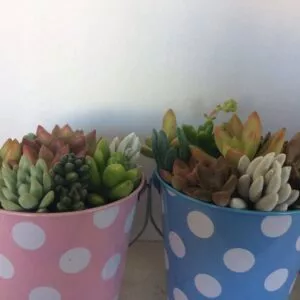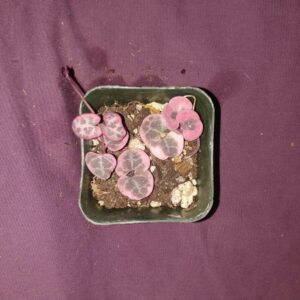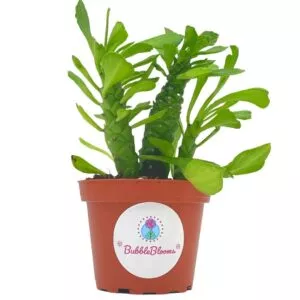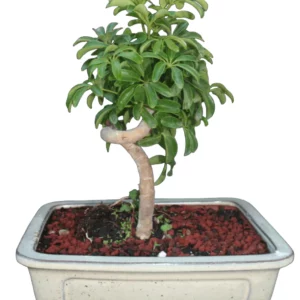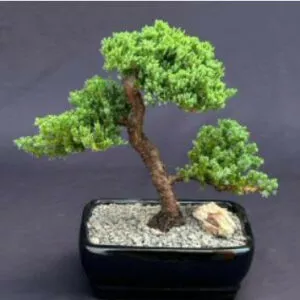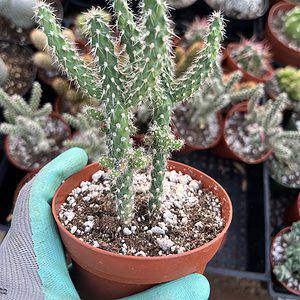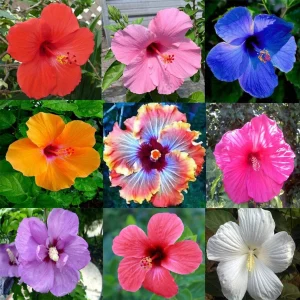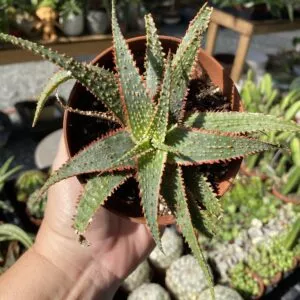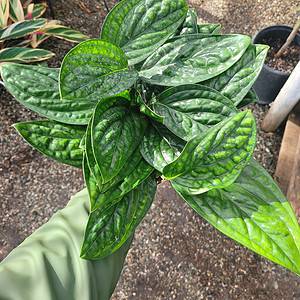No products in the cart.
Table of Contents
Here we have some of the most captivating Pothos varieties for you to grow indoors with a display of variegated foliage to make for a fabulous collection. The best part is they are easy to care for.
What Are Pothos Plants
![]()
Pothos is a trailing vine from the South Pacific and the Solomon Islands. The foliage has pointed heart-shaped leaves, with some having variegated tints of pale green, yellow, or white. You can use it as an indoor plant growing up to 18 inches a month, but it is toxic to pets.
Pothos Benefits
Whether you have a variegated Pothos or other types of Pothos varieties, they all provide you with some great benefits:
- This plant is easy to preserve with heart-shaped leaves, even from cuttings.
- You can grow them without soil and in water by taking cutting up to 12 inches and removing the lower leaves. Place your cutting in a vase, and voila, you are done. You will notice roots forming in a couple of weeks and can transfer them to a pot if you want.
- You can place your Pothos types on a windowsill with bright indirect, or low light.
- Your Pothos plant types provide a calming effect by touching those deep green leaves.
- Pothos species are natural air purifiers that remove harmful pollutants and gasses.
Top 13 Best Pothos to Grow at Home
Golden Pothos

The botanical name is Epipremnum aureum, and the indoor length for growth is up to 12 feet. You will see the green variegation with yellow or golden splashes. You can place it as an outdoor plant in warm, frost-free areas but can become invasive in a humid environment. Make sure to provide them with a moss pole to vine up.
Neon Pothos

The Epipremnum aureum ‘Neon’ can grow indoors up to six feet in length. The foliage on these tropical plants is unique with a golden to yellow yet neon color. The leaves emit a faint glow, and younger leaves show a glimmer more than older ones.
Cebu Blue Pothos

Epipremnum pinnatum ‘Cebu Blue’ is another Pothos variety growing eight feet. Placing this plant in hanging baskets makes for a great display with a metallic sheen when set in the correct lighting. The blue-green leaves form an arrow shape with splits.
Marble Queen Pothos

Epipremnum aureum, ‘Marble Queen’ or marble pothos, has heart-shaped foliage with solid green leaves and is diversified with a creamy white shade. The variegation degree depends on the cutting taken at propagation from the host plant. Compared to the golden pothos, the foliage is smaller.
Manjula Pothos

Epipremnum aureum ‘Manjula’ grows up to five feet indoors with leaves shaped like a heart, similar to other Epipremnum cultivars. The green variegation has shades of cream, silver, and white. You may even find the greenery dotted with splashes of green with prominent white patches or a mix of both.
Jessenia Pothos
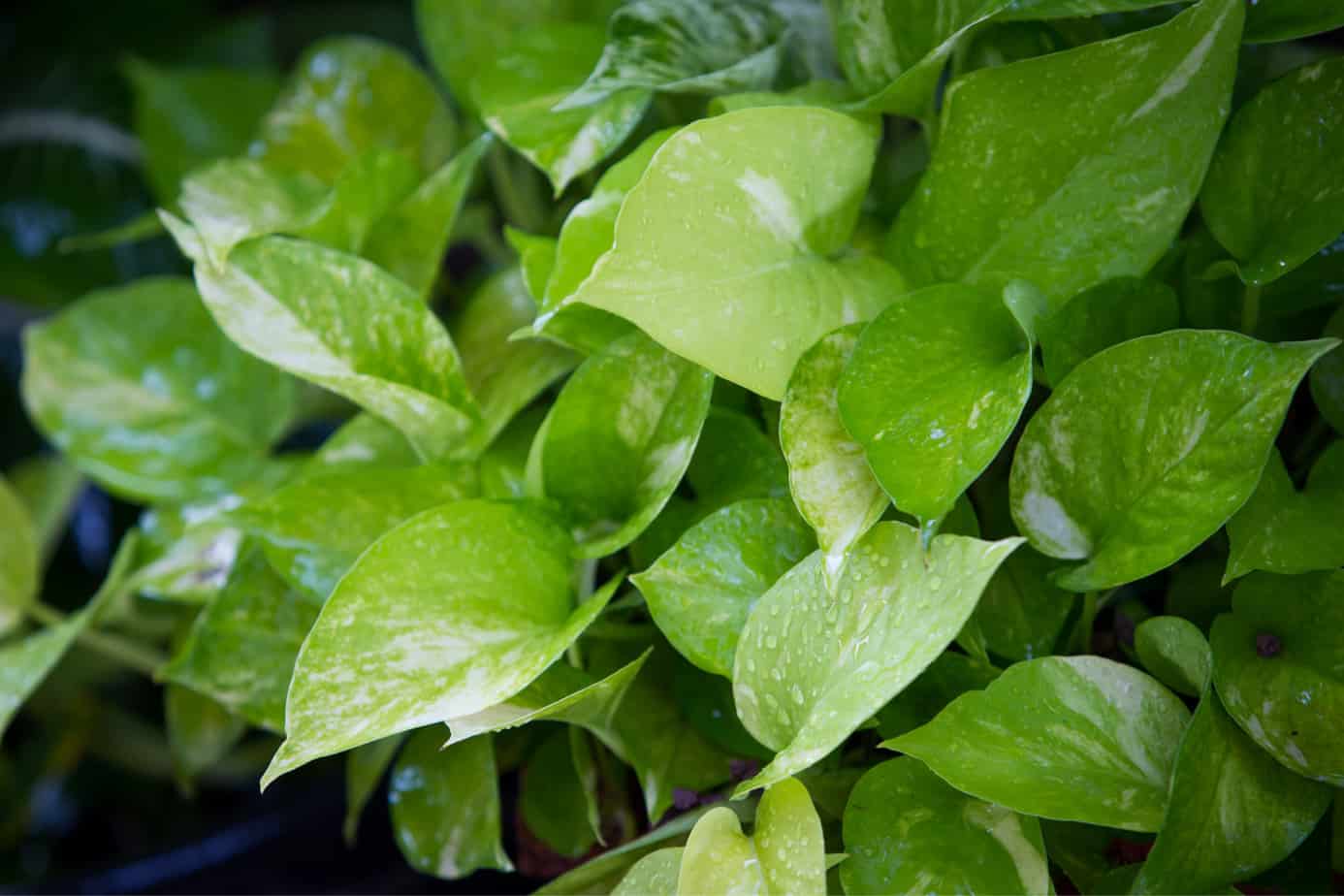
Another excellent example of different pothos plants is the Epipremnum aureum ‘Jessenia,’ which grows eight feet. There is no need to repot mature plants as it grows slowly and quickly. It also has a heart-shaped leaf similar to the marble pothos, but the variegation is less prominent with limey-green variegation.
Pearls and Jade Pothos

Epipremnum aureum ‘Pearls and Jade’ grows to seven feet, and the University of Florida produces the patented variety. According to plant collectors, the plant has smaller leaves than other pothos varieties with silver-gray variegation.
Silver Pothos

As you will see, the botanical name for this plant has changed to Scindapsus pictus. It grows indoors up to six feet but is still part of the pothos variety. It helps to place your plant in bright, indirect light to get the best shade with variegation. It has elegant, exciting leaves with shimmering dark green and shiny silver spots.
Don’t get me wrong, I include this plant in the Pothos varieties when they’re not Pothos plants. Many people considered this plant a type of pothos variety due to its vining nature and variegated leaves. However, this is a different genus under the same family.
Continue reading to find out.
Jade Pothos
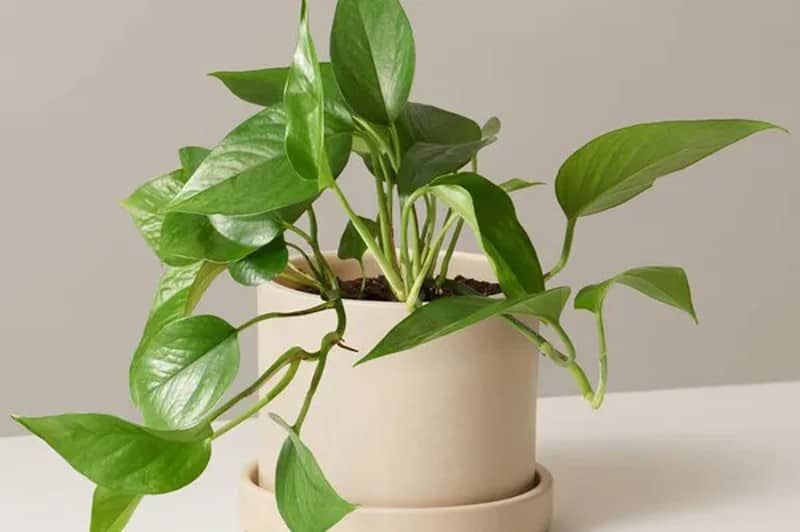
Epipremnum aureum ‘Jade’ can grow up to eight feet and is found in most tropical regions and Polynesia. Place your jade pothos plant in a pot elevated to cascade down for relaxed decor. The heart-shaped leaves look fabulous, with their dark green color standing out.
N-Joy Pothos

Epipremnum aureum ‘N-Joy’ looks similar to the Manjula pothos, but there is a difference in the variegation and hues of the greens, yellows, and whites. You can keep it on a shelf to let the vines dangle down, growing up to six feet long.
Hawaiin Pothos

Epipremnum aureum Pothos ‘Hawaiian’ is one of the finest assortments you can find if you want large foliage. The plant is immune to diseases and is an excellent beginner starter. The gold-green leaves also provide air-purifying abilities to keep your indoor air clean.
You will need to prune it to keep it in shape. It can grow up to 15 feet and looks excellent in shady outdoor spots.
In stock In stock In stock In stock
$35.99
Sold By:
Succulent Oasis
Medium Succulent Arrangement in a Polka Dot Pail Planter. Beautiful, completely assembled dish garden.
Only 14 available and it’s in 1 people’s basket Rated 4.84 out of 5 based on 352 customer ratings01
Sold By:
Succulent Oasis
$70.00
Sold By:
Andy Nursery
$75.00Australian Finger Lime Grafted Citrus Tree. 2 Feet Tall.
Sold By:
Andy Nursery
$20.00
Sold By:
Soul Peace Gardens
Soul Peace Bundle-String of Hearts Variegated
Sold By:
Soul Peace Gardens
$11.99
Sold By:
BubbleBlooms
Euphorbia Ritchiei, Stapelia Monadenium ritchiei, P.R.O. Bally Bruyns, Special Rare Unique Cacti Cactus Plant, short thick cactus stems
Rated 4.81 out of 5 based on 279 customer ratings03
Sold By:
BubbleBlooms
Harlequin Pothos
Epipremnum aureum ‘Harlequin’ can grow up to five feet and is a rare plant to get your hands on. It looks like your Manjula with marble and a mix of the snow queen pothos. You can pair this plant with your silver and jade pathos.
Snow Queen Pothos

Epipremnum aureum ‘Snow Queen’ has stunning white splashes on the leaves, but the white variegation is more pronounced without a pale hue. You can expect your plant to grow up to six feet in length.
Scindapsus and Pothos – Two Distinct Species Often Confused as Varieties
While they may look similar, Scindapsus plants are often mistaken for pothos. Both have lush, heart-shaped leaves, but they are different plant species. Scindapsus, also known as satin pothos, has a more rubbery texture and a slight sheen, while pothos leaves are matte.
-
Free Shipping$87.14Sold By: BONSAI WORLD LLC
Only 1 left in stock
Large Coiled Umbrella Bonsai Tree
Sold By: BONSAI WORLD LLC -
$7.99 – $9.99Sold By: Succulent Oasis
In stock
Calico Kitty Succulent – Crassula marginalis rubra
Only 15 available and it’s in 2 people’s basketRated 4.84 out of 5 based on 352 customer ratings03Sold By: Succulent Oasis -
Free Shipping$227.59Sold By: BONSAI WORLD LLC
Only 1 left in stock
Juniper Bonsai Tree – Trained (juniper procumbens nana)
Sold By: BONSAI WORLD LLC -
$10.99Sold By: Cacti and Exotica
In stock
Cylindropuntia Imbricata—Cholla Cactus
Rated 4.98 out of 5 based on 59 customer ratings01Sold By: Cacti and Exotica
True pothos belong to the Epipremnum genus in the Araceae family. In contrast, Scindapsus is in the Araliaceae family. One key difference is that pothos produce two-lobed leaves on juvenile plants before maturing to adult leaves.
Scindapsus juvenile leaves have one lobe like the mature form. While both can be grown as low-maintenance hanging plants, proper identification ensures you choose the right care and conditions. When buying new plants, check for the genus and species name to avoid confusing Scindapsus cultivars like ‘Silver Satin’ for variegated pothos.
Some famous Scindapsus plants you can see that are mistakenly considered pothos are Scindapsus pictus ‘Silver Satin’, Scindapsus pictus Moonlight Treubii, and Scindapsus pictus ‘Exotica’
But then again, these are not pothos varieties, okay. Let us all correct that. We include these plants as the best pothos varieties because that’s what people are accustomed to believing. Now you finally know.
Whether you want to buy, sell, or simply reach out to other plant enthusiasts, Plantly is the right place to be!
-
Free Shipping$8.29Sold By: CZ Grain
In stock
mixed color hibiscus
Rated 4.60 out of 5 based on 156 customer ratings00Sold By: CZ Grain -
$12.00Sold By: Smoot's Farm
In stock
Aloe Hybrid Christmas Carol 4″ Pot Live Plant
Rated 4.89 out of 5 based on 27 customer ratings00Sold By: Smoot's Farm -
$10.00 – $15.00Sold By: PotHedz Plants
In stock
Golden Pothos
Rated 4.96 out of 5 based on 106 customer ratings01Sold By: PotHedz Plants -
$40.00Sold By: Plants by Stinky Boo
In stock
Monstera Peru
Rated 5.00 out of 5 based on 2 customer ratings00Sold By: Plants by Stinky Boo
